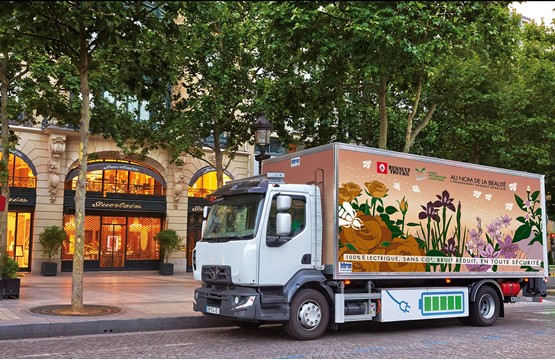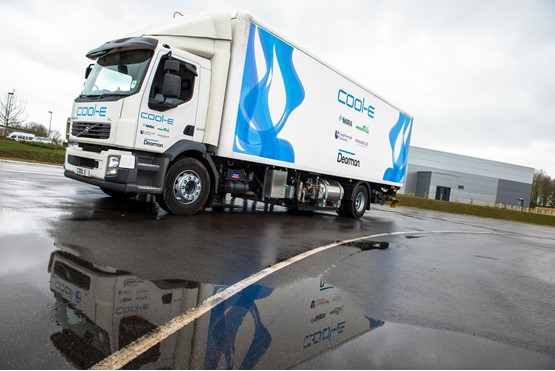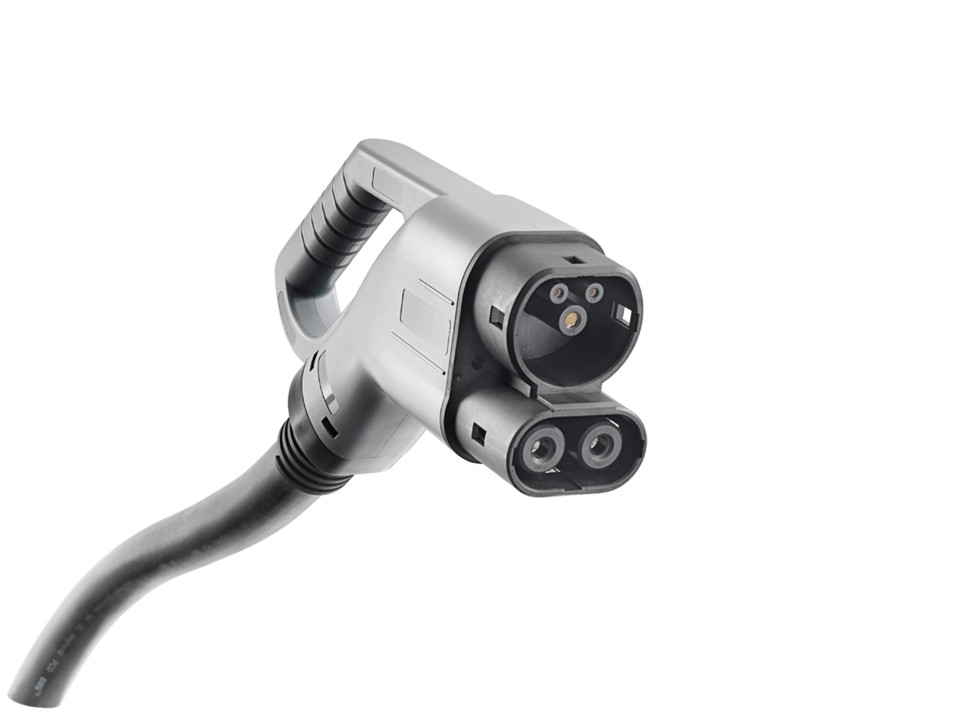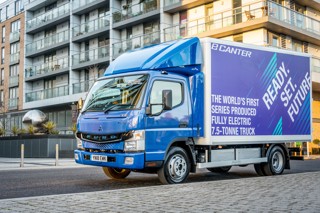Some experts say battery range reservations mean that diesel will be around for a long time; others feel gas-powered or hydrogen fuel cells may provide some of the clean air answers. By James Gordon
Manufacturers have been producing diesel-powered internal combustion engines (ICEs) for the best part of 90 years.
Now a perfect storm is brewing which could have major repercussions for commercial vehicle makers. But these strong winds of change are not a physical phenomenon.
Instead, they are being generated by global policymakers pushing through strict air quality reforms in large cities, which include future diesel bans.
Advances in technology have helped trailblazers like Tesla which, unlike traditional manufacturers has built its electric vehicles ‘from the bottom up’ to gain a key foothold in the market.
Tesla’s latest innovation – a Class-8 heavy-duty truck designed for the long-haul market – is, arguably, its most ambitious project yet.
But can Tesla, its rivals and those manufacturers pioneering alternative fuel technologies, really provide a commercially viable alternative to diesel for the short-, medium- and long-haul markets?
The Tesla Semi, slated to hit America’s highways next year, has certainly piqued the interest of global logistics providers.
The Economist reports the maker has received 500 orders, while Business Insider website lists some of the big names who have placed them, which include UPS (125 orders), Pepsi (100), DHL (10), FedEx (20) and Walmart.
According to Tesla, which declined Commercial Fleet’s request for an interview, the big-rig truck has a maximum range of 500 miles and can carry a cargo of 36 tonnes.
Tesla says the truck, which has a base price of between £110,000-£140,000, “will deliver massive savings in energy costs” consuming “less than two kW hours per mile”.
Tesla has also sought to address the issue of range anxiety by announcing that it will be provide its freight customers with access to megacharging ports capable of adding 400 miles of range in around 30 minutes.
However, Tesla was unable to confirm when this high-power charging technology will become available.
For many, the jury is still out as to whether this long-haul truck, and others like it, can flourish.
Professor Edward Sweeney, the director of Aston Logistics and Systems Institute and an expert in long-haul freight patterns, thinks the Tesla Semi has the potential to address some of the range anxiety concerns that are stymying electrification, but says “there are genuine concerns among logistics professionals about the cost/benefit analysis.”
He adds:“The challenge for those on the freight sector interested in purchasing the Semi is to effectively assess whether the initial capital cost can be offset against cost savings – particularly fuel costs – over the life of the product.
“An additional challenge is that profit margins are typically quite low in the logistics sector, encouraging a relatively short-term approach to investment decision-making.”

Claims ‘quite steep’
Price is also an issue for Chandramowli Kailasam, head of Frost & Sullivan’s global commercial research team, who says: “We are looking closely at Tesla’s claims, which seem to be quite steep for a launch in 2019 unless they have a breakthrough in battery technology.
“The Semi, with its 300-mile range, looks achievable for the short regional haul market, but not for longer distances. However, for the price to come in at around US$180,000 (£131,000), Tesla would have to achieve volume of scale, using the same NMC 811 chemistry across its entire product line, which looks unlikely.
“Therefore, US$200,000 (£146,000) to US$225,000 (£164,000) would be a more realistic price, and that is almost twice the cost of its conventional diesel-powered counterpart.”
That said, Kailasam, who has led the global commerce team for the past six years, thinks the issue of upfront acquisition price is something of “a red herring” and “might not be relevant given most electric trucks are likely to be leased”.
“I believe this is not a concern, as with the cost of batteries likely to stay above US$100/kWh (£74/kWh) until 2025, and their shelf life around four years (based on average long-haul usage), a leasing model is likely to emerge that will allow next-generation batteries to be replaced at much lower costs in the future,” Kailasam adds.
“This pricing model will, in turn, enable economies of scale to flourish, meaning electric trucks in the long-haul market could become competitive somewhere around 2024-25. But that is our most optimistic estimate.”
However, a number of technological barriers remain before a pure battery-powered truck can provide an alternative to diesel on long-haul routes, thinks Ben Lane, who has spent the past 10 years developing commercial digital services in the automotive sector.
Lane, director of Next Green Car, believes that, while heavy-duty vehicles will eventually electrify to some degree, there are too many unknowns to accurately predict when.
He says: “We are in the same place as we were in 2009 when the automotive industry and governments were having the same debate about the first plug-in passenger cars.
“However, there are some known knowns. Battery prices have fallen by a staggering 73% since 2010, and energy density is improving all the time.
For example, the emergence of the lithium-sulphur battery, which is not yet in production, could provide double the energy capacity compared with current battery chemistries.”
But what will these technological breakthroughs mean for the commercial van sector, where electric accounts for just 0.1% of all commercial vans (CVs) in the UK?
While there has been a 60% rise in the number of ultra-low emission vans in the UK, and 9% of fleets now contain electric cars, David Bailey, a professor of industrial strategy at Aston Business School, expects the electric CV market to thrive, albeit from a low base.
Bailey says: “The market will increase in size, especially in terms of the depot-to-depot market in urban areas. As battery life improves and charging infrastructure develops the market will expand further.
“Nissan’s e-NV200, with a range of 174 miles and a payload of more than 600kg, is now a staple of many commercial fleets.”

But with the van sector undergoing a period of rapid change, Bailey says it is important that lawmakers keep pace with technology.
“A standard driving licence allows the driver to carry weights up to 3,500kg. However, electric vans are much heavier than diesel vehicles due to their batteries.
"Therefore, if the law does not change, CVs will end up carrying less and this could have a negative effect on productivity.
“The Government is looking to increase the weight limit for Category-B licence holders to 4,250kg for alternatively fuelled vehicles. Bailey says the legislation needs to be pushed through soon, as it could also spur the development of plug-in hybrid vans.
But it is not legislation, but infrastructure and technology challenges, that will determine the future of long range electric trucks, according to Lane. He thinks the market may not be quite ready for the mass-adoption of long-haul pure electric battery HGVs.
“The great obstacle to realising fully electrified fleets is not the strain that an armada of electric HGVs would put on national grids although this will require careful energy management and time-shifting charging to off-peak,“ Lane says. “Rather it will be a failure to adequately develop cost- and weight-effective batteries and to provide sufficient public charging infrastructure. That will be the greatest blocker.”
Lane adds: “More than 95% of HGVs are diesel-powered. For the market to switch to electric, batteries will need to deliver the equivalent range and payload capacity of a conventional truck. Even if battery developers make these evolutionary breakthroughs, it will also require logistics companies to install large rapid charging points at depots. I believe it will also mean thinking out of the box with battery swap stations being an option for fleets. For example, in Asia, operators often assign two tractor units to one trailer, and swap drive units (hence batteries) over on a 12-hour cycle.”
But Steve Carroll, who is head of transport at Cenex, believes those responsible for rolling-out charging infrastructure will need to think more about the requirements of commercial fleets in the future if battery electric vehicles are to go from serving back-to-base markets to long-haul ones.
“Commercial operators require reliable charging infrastructure,” says Carroll. “They also need their vehicles on the road, earning money, meaning the ability to book public charging infrastructure in advance would be an important step towards giving commercial operators the confidence to move charging facilities out of their own depots. This would have the added benefit of removing power capacity constraint at fleet depots which is a key barrier at present.”
‘No viable long-haul proposition’
While the future of pure electric fleets depends on a number of factors, Andrew Scott, head of product management at Renault Trucks, does not believe “there is any viable long-haul proposition at this point”. Instead, he thinks demand for the technology will be “partly driven by environmental pressures and local legislation” and says that the refuse sector is “one which is particularly well-suited to EV application”.
With this in mind, Renault Trucks will introduce a Range D 16-tonne fully electric truck in 2019, which has a 185kW electric motor powered by two-to-six lithium-ion batteries. It has a range of up to 300 kilometres (186 miles) and a charging time of as little as two hours.
The technology, which is also to be introduced by Volvo Trucks in its range, is developed from Volvo’s extensive experience with buses.
Scott says: “As the technology and experience of operating EVs increases we will see wider adoption of zero tailpipe emission vehicles across different sectors, but we expect waste operators to be among the earliest adopters of the technology because of the particular environmental demands of the customers, and the suitability of operating cycles to the constraints of current battery technology.”
Working within the current battery technology limits has not dissuaded manufacturers from building trucks for the distribution market’s lower weight categories.
Mercedes-Benz Trucks is selling an all-electric truck with a range of 60 miles, which has been specifically designed to carry out distribution in inner city and urban areas.
For fleets wishing to travel further, electric range-extending vehicle manufacturers such as Tevva, which combines a 74kWh lithium iron phosphate battery with a small, fuel-powered ICE, are providing an answer.
However, none of these solutions solve the long-haul conundrum, which is still dominated by diesel. With many governments wishing to phase out diesel, what, if anything, will replace it?
Who better to ask than Martin Watkinson and Ben Gale, who work on future transport technologies for Horiba Mira, a leading automotive engineering and development consultancy. Contrary to regulators, both believe there will always be a place for Euro VI diesel-powered trucks, “particularly for carrying heavy loads and long journeys”.
And while gas-powered van fleets may not be the future in the eyes of some, customer demand for the Mercedes-Benz Sprinter 906 – which was powered by a mono or bivalent gas drive – was low. Watkinson says gas-powered trucks could gain traction for long-haul trips that don’t involve city deliveries.

“Trucks fuelled with gas have cleaner characteristics than those powered by diesel, and the upfront cost of producing gas-fuelled trucks is cheaper than diesel,” Watkinson adds.
“As a result, I think we should expect to see more gas-powered trucks on the road. However, this will not resolve the bigger issue of CO2 emissions and their effect on our planet. More work is required to understand the range of power solutions for the logistics industry and the viability of other options such as liquid nitrogen or hydrogen-fuelled vehicles.”
Gale notes that dual-fuelling is another option that will become more popular for long-distance fleets.
He says: “Dual-fuelling is an interesting option, with our work highlighting that, by forming a fuel mix consisting of 10% hydrogen and 90% diesel, particulate emission can be significantly reduced on the existing fleet.
“However, given that hydrogen does not exist naturally in a readily available gaseous form and has to be manufactured, there are question marks around whether or not it would be possible to create enough hydrogen for dual fuelling to become commercially viable.”
What of hydrogen as the single fuel source? It is being used to good effect to power a fleet of buses in Aberdeen, while the Nikola Motor Company, a Utah-based manufacturer pioneering the technology in commercial fleets, claims it will “create the largest hydrogen network in the world”, which it says will span 2,000 miles.
With Nikola launching in the US in 2021, it has also promised its customers it will cover the cost of the first million miles of hydrogen.
So, could hydrogen be a viable alternative for UK fleets, too?
Watkinson says: “Certainly, we see hydrogen getting traction in some capacity. However, we are not going to see an immediate leap to the hydrogen form of fuelling.
“We know Aberdeen has created a local hydrogen economy using renewable hydrogen from the Orkneys. They have dual-fuelled vans and refuse vehicles running high percentages of hydrogen in their fuel mix. However, this requires the vehicles to be re-tuned. Ultimately, it’s a niche market, and for now, I think that using hydrogen to power commercial fleets will be regionally limited, due to the resources we have to create hydrogen and the refuelling infrastructure needed.”
But Kailasam thinks the hydrogen fuel cell market has promise. “Perhaps fuel-cells make more sense on paper and that is why the launch of Nikola in the US and Scania’s H2 gas propulsion product trials with Norwegian wholesaler Asko are exciting developments to witness, and can grow to be a competitive solution competing with battery electric and other alternative fuel solutions – starting with commercial fleets that are ready to install the necessary hydrogen fuelling infrastructure in short-term. For fuel-cells to become a serious long-term contender, establishing infrastructure will be the key, and this is where the traditional oil giants and oil marketing firms can play a pivotal role, as real-estate won’t be a constraint.”
Whatever happens, it’s clear manufacturers will have to move with the times, or suffer the wrath of a destructive ‘storm’ that will change the market for them.



















Login to comment
Comments
No comments have been made yet.